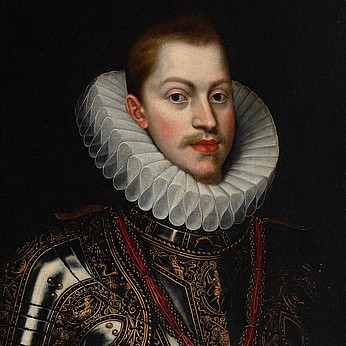BARTOLOMEO MANCINI (c. 1630-1715); Rome, 1701. "Christ and the Virgin and Child." Oil on copper.
Lot 61
About Seller
Setdart Auction House
Carrer Aragó 346
Barcelona
Spain
Setdart Subastas was born in 2004 and is currently the first online art auction in Spain with solidity, prestige and reliability guaranteed by our more than 60,000 users. Setdart has a young, dynamic and enterprising team ready to successfully manage the purchase and sale of art works through custom...Read more
Estimate:
EUR€6,000 - EUR€7,000
$6,451.61 - $7,526.88
Absentee vs Live bid
Two ways to bid:
- Leave a max absentee bid and the platform will bid on your behalf up to your maximum bid during the live auction.
- Bid live during the auction and your bids will be submitted real-time to the auctioneer.
Bid Increments
| Price | Bid Increment |
|---|---|
| EUR€0 | EUR€10 |
| EUR€200 | EUR€25 |
| EUR€500 | EUR€50 |
| EUR€1,000 | EUR€100 |
| EUR€3,000 | EUR€200 |
| EUR€5,000 | EUR€500 |
| EUR€10,000 | EUR€1,000 |
| EUR€20,000 | EUR€2,000 |
| EUR€50,000 | EUR€5,000 |
About Auction
By Setdart Auction House
Nov 24, 2021
Set Reminder
2021-11-24 09:00:00
2021-11-24 09:00:00
America/New_York
Bidsquare
Bidsquare : Old Masters, Day 1
https://www.bidsquare.com/auctions/setdart-auction-house/old-masters-day-1-7873
Setdart Auction House sofia@setdart.com
Setdart Auction House sofia@setdart.com
- Lot Description
BARTOLOMEO MANCINI (c. 1630-1715); Rome, 1701. "Christ and the Virgin and Child." Oil on copper. They present jumps in the painting. They retain period frames. Signed and dated on the back. Measurements: 27,5 x 20,5 cm (x2); 34 x 26,2 cm (frames, x2). Due to the material and the reduced dimensions of each of the works that make up this set, it is very likely that they were intended for private devotion. Both pieces are conceived in the same way, although they represent a different image. It is a clear and simple composition with the main protagonist imbued in an ochre background, illuminated by the rays of sanctity given off by each of the characters. These are presented through the bust inscribed in the oval format of the support, facing the viewer, although in both cases looking away and avoiding direct contact. In the representation of Jesus, she raises her gaze upwards, while Mary turns her face in profile and lowers her gaze in a completely pious attitude. Both works stand out for the softness and softening of the features, combined with the use of a chromatic range of energetic and emphatic tonalities. These characteristics invite us to think of the work of the Italian painter Bartolomeo Mancini, to whom is attributed a piece, located in the Museo di Casa Martelli in Florence, which presents the same composition as the portrait of the Virgin present here except for the format. It is his well-known Madonna Addolarata There are many and varied iconographic representations whose central theme is the Virgin Mary in her Sorrowful aspect, the first of them being those in which she appears next to the Child Jesus, who sleeps oblivious to the future of suffering that awaits him. In these works is usually present the cross, the main symbol of the Passion, embraced even by the Child, while Mary observes him with a pathetic expression. Another aspect is the one that is part of the Pietà, similar to the previous one, although her Son is here dead, not asleep, depicted as an adult and after his crucifixion. In the oldest representations of this theme, the body of Christ appears disproportionately small, as a symbol of the memory that the mother has of her Son's childhood, when she contemplated him asleep on her lap. Finally, the Virgin of Sorrows and Solitude also stands out in importance, where Mary appears alone, sometimes with her heart pierced by one or several swords. Since this representation is very close to popular sentiment, the iconography of the Virgin of Sorrows is followed by that of Solitude:
- Shipping Info
-
In-house shipping available. Please inquire at admin@setdart.com.
-
- Buyer's Premium



 EUR
EUR CAD
CAD AUD
AUD GBP
GBP MXN
MXN HKD
HKD CNY
CNY MYR
MYR SEK
SEK SGD
SGD CHF
CHF THB
THB














